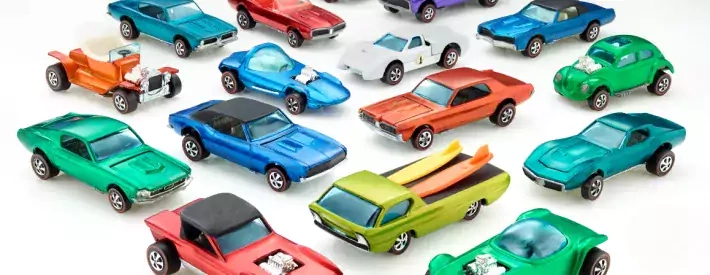From real thing to little thing: Getting Hot Wheels track-ready

If you like cars, or have been near someone who likes cars, chances are you’ve spent a decent amount of time near Hot Wheels. They’re small, fun, and cheap, which means you can quite easily end up with shelves of the things without trying very hard at all. Some look like cars you can buy, others… most certainly do not.
They’re very cool, and neat to have around, but how does a Hot Wheels become a Hot Wheels? To find out, MotorPro caught up with Manson Cheung, Hot Wheels Designer and Digital Sculptor.
“There's a few different types of cars. We have licensed vehicles [the ones that look like actual cars]. And then we have non-licensed, which come from the minds of our designers: we call them Hot Wheels Originals because they're our original designs. With a licensed vehicle if it's a new car, there'll be files from the manufacturer. We take those files and translate them into a toy,” he says.
That makes it sound more simple than it actually is. A basic Hot Wheel needs to fit the same wheels, dimensions, and be fit for hurling around ribbons of orange track which requires some scaling work:
“We find out what the size is in real life, size it down to 1/64th scale virtually… Then we print it out to see if it matches with all the other cars in the line and adjust accordingly. Then, obviously, we have to fit our wheels on because we are limited to the size of our wheel… And from there, we carefully adjust elements to get the essence of the real car and make it look correct at that smaller scale,” says Cheung.
The tweaks Cheung mentions can range from wings to wing mirrors and other pointy flourishes. A Pagani Huayra’s wing mirrors are very delicate, swoopy affairs that wouldn’t really work on a four piece basic Mainline model. Of course, the higher end, premium models such as Car Culture get more detail such as tampo printing and Real Rider tyres. And things are going to get even more detailed in the future.
“We just announced a new line that's called the Elite 64. Our standard Mainline cars are four parts: chassis, interior, window, body. Then our premium cars, they're usually four but go up to sometimes eight pieces. Our Elite line is 20-something-plus pieces,” says Cheung.
Whether the model is licenced, or a Hot Wheels Original, it’s first sketched and then properly digitally sculpted by Cheung and his colleagues: “We take the 2D designs and we convert that into 3D by sculpting it on computer. It generally takes about 40 hours to sculpt a car,” he says.
From there it’s another 40 to 80 hours to sort the four parts (of a basic Mainline car), then the 3D files are sent to the factory in Asia for development, build, and testing.
Testing Hot Wheels may well be the best job on the planet: “Once the cars come off the line, they grab a bunch of them and test each car on a special course that's designed with loops and curves,” says Cheung.
Whether licensed or original, the cars are thrashed, and then rated for their performance on Hot Wheels’ iconic tracks, the kings of the hill dubbed ‘Track Stars.’
From green light to completion is, says Cheung, about nine to ten months, which is kind of mind blowing for something that seems so simple at first glance. What’s clear is that Cheung LOVES what he does, and pours his soul into every design or sculpt.
So, next time you’re in the supermarket and spot a Hot Wheels, just remember that a bit more goes into them than you might expect.




